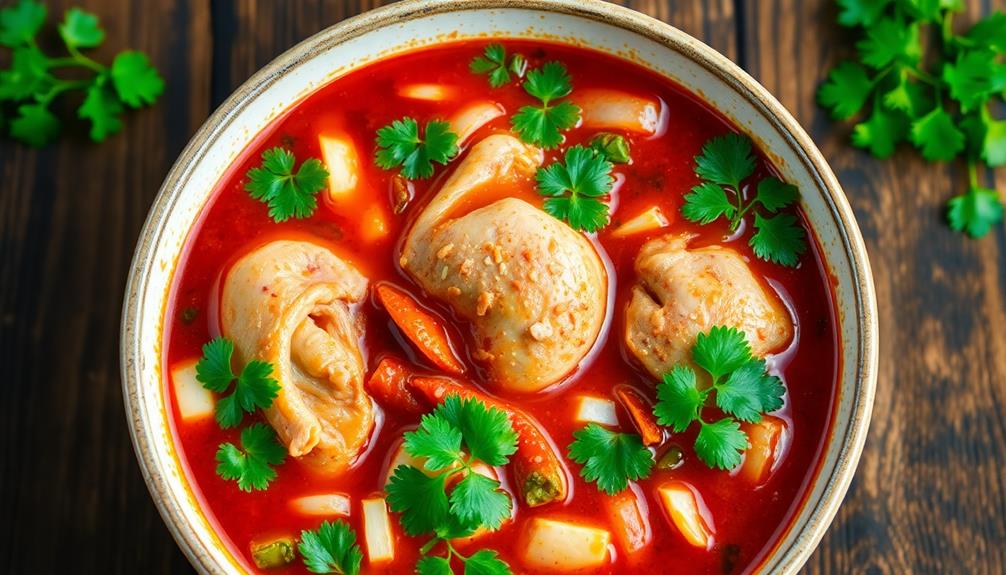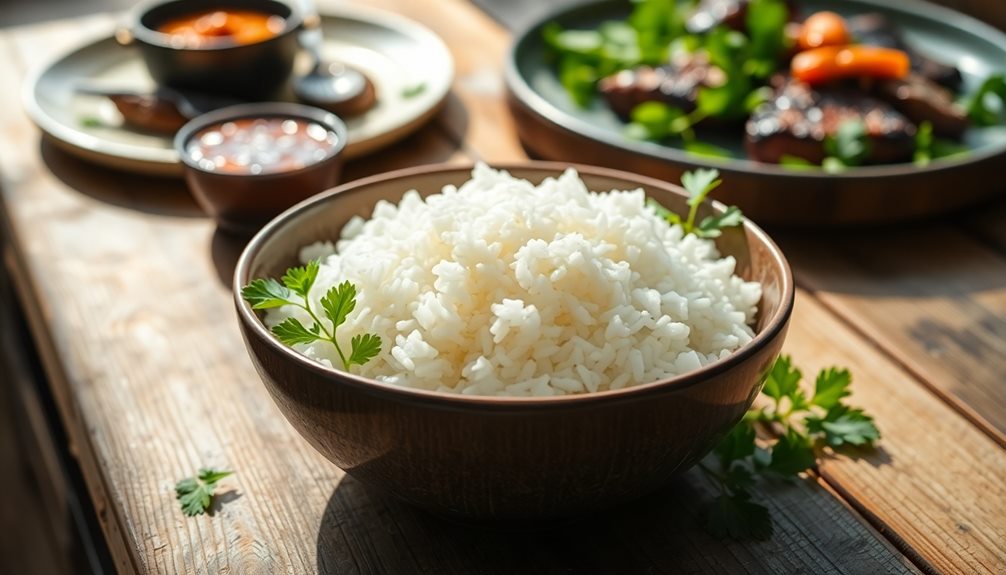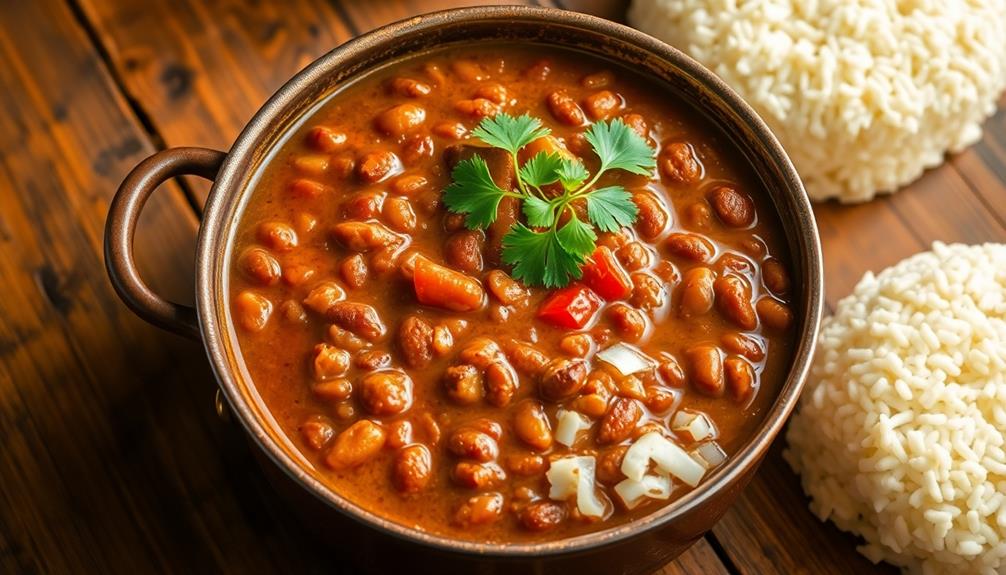Garri is a delicious and important staple food in Nigeria, made from fermented cassava. It's easy to prepare, often enjoyed as a flour-like mixture with water or cooked as a dough called eba. Garri is loved by many because it's not only affordable but also lasts a long time without spoiling. You can serve it in different ways, like with sugar and milk, or use it in soups. Plus, it connects families and communities during celebrations. If you're curious about how it's made or its nutritional benefits, there's so much more to discover!
Key Takeaways
- Garri is a staple food in Nigeria, made from fermented cassava, known for its affordability and accessibility.
- It serves as a cultural icon, often shared during celebrations and community gatherings, symbolizing tradition and resilience.
- The preparation of garri involves soaking, grating, fermenting, pressing, and roasting cassava roots to achieve its flour-like texture.
- Nutritionally, garri is a good source of carbohydrates and dietary fiber, low in fat, and can be enhanced with other ingredients.
- Economically, garri supports local farmers and contributes to food security, providing income opportunities in processing and distribution.
History
Understanding the history of garri in Nigeria reveals its significance as a staple food and cultural icon. Garri is made from cassava, a plant that's been grown in Nigeria for centuries. People started processing cassava into garri long ago, and it quickly became a favorite food for many families.
It's easy to see why! Garri is delicious, filling, and can be enjoyed in lots of different ways.
In Nigeria, garri isn't just food; it's part of the culture. Families gather to share meals featuring garri, and it's often served during celebrations and special occasions. You might find it next to stews, soups, or even mixed with cold water and sugar for a refreshing treat!
Garri also plays an important role in the economy. Farmers grow cassava, and many people work in the production of garri, providing jobs and income for their families.
This means that every time you enjoy garri, you're part of a long history that connects you to generations of Nigerians. It's more than just a meal; it's a taste of tradition, community, and resilience that continues to thrive today!
Cooking Steps
When you're ready to cook garri, start by measuring the desired amount of the flakes. You can use a cup or a bowl, depending on how much you want to make.
Once you've got that, grab a pot and boil some water. You'll need enough water to soak the garri thoroughly.
When the water's bubbling, carefully pour the garri flakes into the pot. Stir it gently with a spoon to mix the flakes evenly into the water. You'll see the garri soak up the water and swell up, which is super exciting!
Keep stirring for a few minutes until it reaches your preferred consistency. If you like it thicker, let it cook a bit longer; if you prefer it softer, take it off the heat sooner.
Once it's ready, you can serve your garri hot or let it cool down a little. It's delicious with sugar, milk, or even some fruits.
Enjoy every bite! Cooking garri is simple and fun, making it a perfect meal for any time of day. So, gather your ingredients and get started on this tasty dish!
Step 1. Soak Cassava Roots Overnight
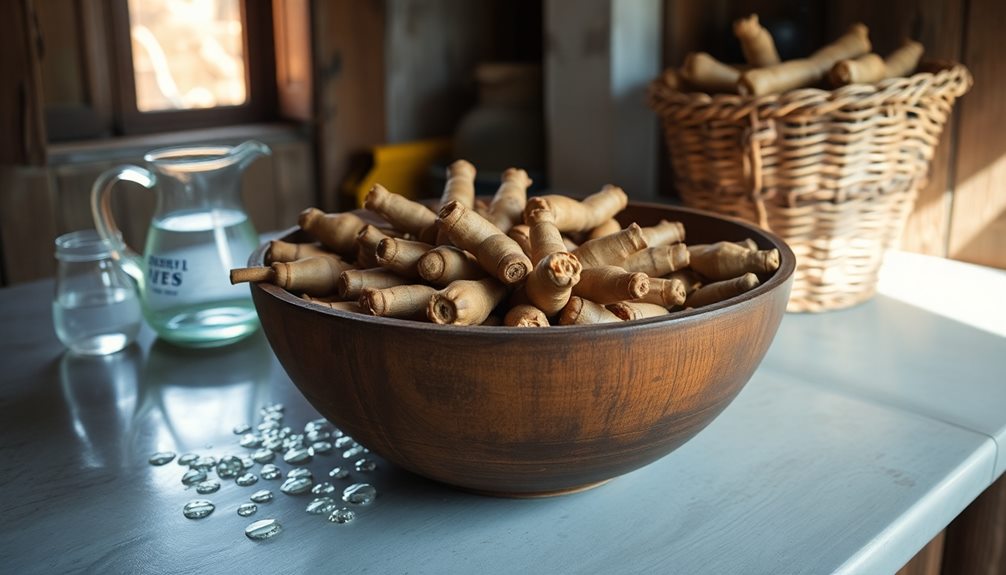
To prepare cassava roots for making garri, you'll want to soak them overnight. This step is super important because it helps soften the tough roots and makes them easier to process later on.
First, grab some fresh cassava roots, and wash them thoroughly to remove any dirt. It's like giving them a bath!
Next, take a large bowl or container and fill it with enough water to fully submerge the roots. You can use cold or warm water, but warm water speeds up the soaking process a bit. Place the washed cassava roots in the water, making sure they're covered completely. You can even place a plate on top to keep them submerged if they float!
Now, let them soak overnight, which is about 8 to 12 hours. This waiting time is crucial because it allows the cassava to absorb water and swell, making them easier to grate later. Plus, this soaking helps remove some of the bitter taste that raw cassava can have.
When you wake up, you'll be ready for the next exciting step in your journey to making delicious garri! Happy soaking!
Step 2. Grate the Soaked Cassava

Now that you've soaked the cassava overnight, it's time to grate the softened roots. This step is super important for making delicious garri! First, grab a grater or a food processor if you have one. If you're using a grater, be prepared for a little workout—grating by hand can be a bit tiring, but it's worth it!
Start by peeling off the outer skin of the cassava. You'll want to chop the roots into smaller pieces to make grating easier. Then, hold the cassava piece against the grater, and move it up and down. You'll see the white flesh turn into tiny shreds.
If you're using a food processor, just chop the cassava into chunks and pulse it until it's finely grated. As you grate, make sure to place a large bowl underneath to catch all those tasty shreds.
Once you've grated all the cassava, take a moment to admire your work! You're one step closer to making garri. The grated cassava is going to be the base for the next exciting step in your garri-making adventure. Keep going; you're doing great!
Step 3. Ferment Grated Cassava Mixture

Fermenting the grated cassava mixture is a crucial step in developing that distinct garri flavor. After you've grated the soaked cassava, it's time to let it sit and ferment. This process usually takes about three to five days.
You'll want to find a cool, dry place to store it, away from direct sunlight. The fermentation helps break down the cassava starches, giving garri its unique taste and slightly sour aroma.
During this time, you might notice some bubbling in the mixture. That's a good sign! It's just the natural fermentation process at work. Make sure to check on your cassava every day, stirring it gently so it ferments evenly.
You're looking for a nice, soft texture but not too mushy. Once it's fermented, you'll be ready to move on to the next steps. This part is important because it sets the stage for the delicious garri you'll soon enjoy.
Just think about how tasty your garri will be after this! So, keep an eye on it, and enjoy the bubbling excitement of making something special. Your hard work will definitely pay off in the end!
Step 4. Press Grated Cassava Mixture
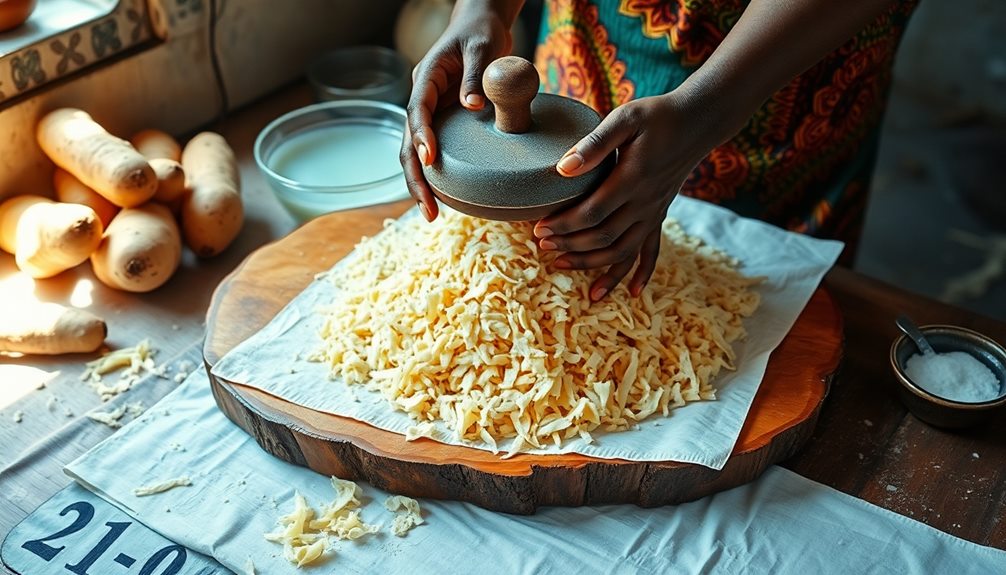
After the fermentation is complete, the next step is pressing the grated cassava mixture to remove excess moisture. This step is super important because it helps create the perfect texture for your garri!
First, you'll want to gather your grated cassava in a clean cloth or a strong basket.
Then, carefully twist and squeeze the cloth, or place the mixture in the basket and press down hard. You can even put a heavy stone or a weight on top to help squeeze out the water.
Keep pressing until you notice that a lot of liquid has dripped out. Don't worry if it seems like a lot; that's just what you need to do!
Once you're satisfied with how much moisture you've removed, you can feel the cassava mixture becoming firmer in your hands. This means you're one step closer to making delicious garri!
Make sure to check that it's not too wet, as that can affect the final taste. You're doing great, and soon you'll be ready to move on to the next fun step of roasting your pressed cassava!
Keep up the fantastic work!
Step 5. Roast the Pressed Cassava
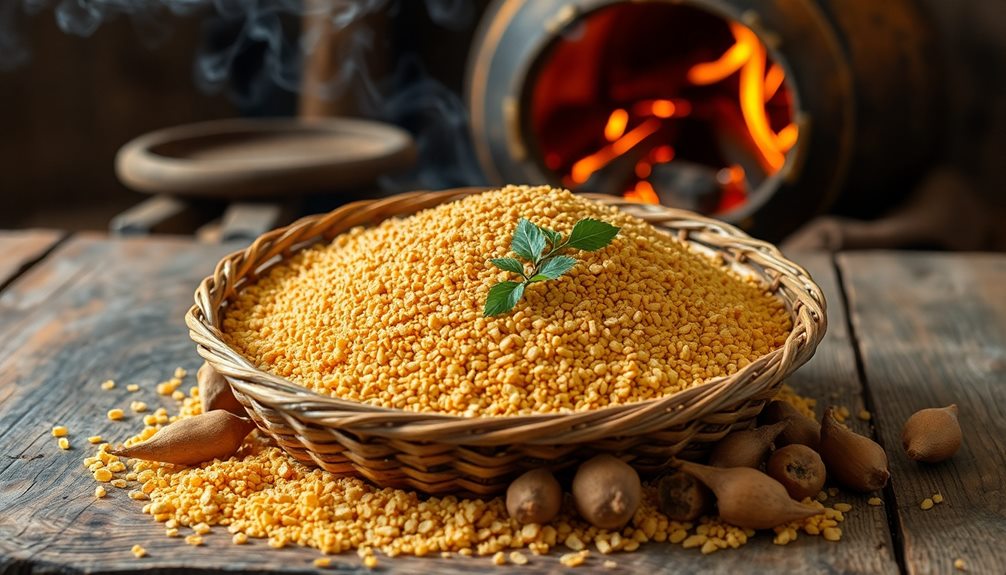
Once you've pressed the cassava and removed excess moisture, it's time to heat things up by roasting the mixture! This step is super important because it gives garri its unique taste and texture.
First, grab a large frying pan or a flat surface like a griddle. Make sure it's clean and dry—this will help everything cook evenly.
Next, pour the pressed cassava into the pan. Spread it out evenly so that it cooks well. Now, turn on the heat to medium. As it heats up, stir the cassava constantly with a wooden spoon. This keeps it from sticking and burning. You'll notice a lovely aroma filling your kitchen!
Keep roasting until the cassava turns a light golden color. This usually takes about 10 to 15 minutes. Don't rush this part; you want it to be just right!
Once it's ready, take it off the heat and let it cool down a bit. After that, you can enjoy your garri in so many ways—like with soup or milk. It's a delicious treat that's sure to make your taste buds happy! Happy cooking!
Final Thoughts
As you explore the significance of garri in Nigeria, it's clear that this staple food transcends mere sustenance; it embodies cultural heritage and resilience.
Garri isn't just a meal; it's a part of everyday life for many Nigerians. You might find it served as a side dish, a snack, or even a main course. Imagine the joy of mixing garri with cold water and sugar, creating a tasty treat that's both refreshing and filling!
When you think about garri, you're also thinking about community. Families gather to prepare it, share recipes, and enjoy meals together. It connects people, fostering friendships and cultural traditions that have lasted for generations.
Plus, the versatility of garri means you can enjoy it in so many ways! Whether it's eba, a popular dish made from garri, or simply having it with milk, the options are endless.
Frequently Asked Questions
What Are the Nutritional Benefits of Garri?
Garri offers several nutritional benefits, including carbohydrates for energy, dietary fiber for digestion, and essential vitamins and minerals. It's versatile, can be easily incorporated into meals, and helps keep you feeling full longer.
Can Garri Be Eaten Raw Safely?
Yes, you can eat garri raw safely. It's often enjoyed soaked in water or milk, sometimes sweetened with sugar. Just ensure it's from a reputable source to avoid any potential contamination or health risks.
How Is Garri Different From Other Cassava Products?
Garri's unique fermentation process sets it apart from other cassava products. You'll find it's usually fermented, dried, and processed into granules, while other forms, like cassava flour, remain unfermented and are typically ground finer.
Where Can I Buy Garri Outside Nigeria?
You can buy garri outside Nigeria at African grocery stores, online marketplaces like Amazon, or specialty food shops. Check local international markets, too; they often carry a variety of African products, including garri.
What Are Common Dishes That Include Garri?
You'll find garri in various dishes like ewa garri, where it's mixed with beans; garri soakings, a refreshing snack with water and sugar; or as a side to soups like egusi or ogbono. Enjoy!


